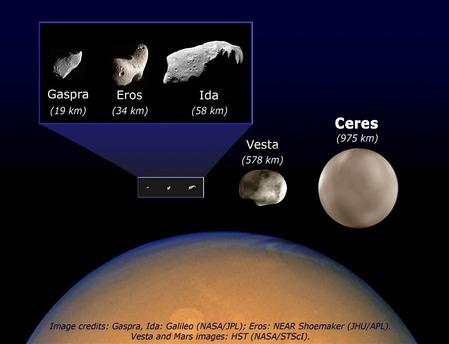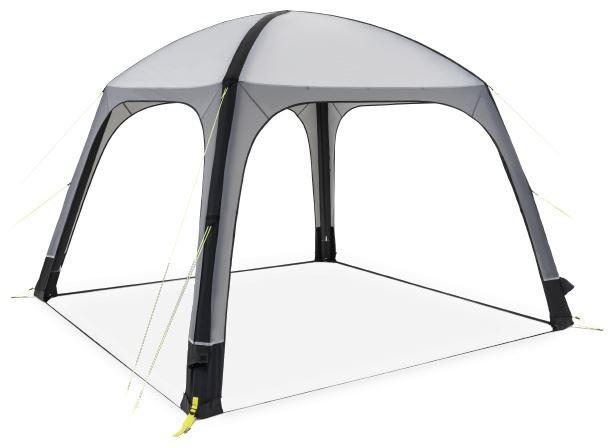In the vast tapestry of existence, where stars twinkle like diamonds and mysteries await around every corner, lies a realm that beckons the brave and the curious. Welcome to ‘My Little Universe: the Explorer’s Survival Guide’, your passport to the unknown, a comprehensive companion for the intrepid adventurer, and a stepping stone to the secrets of the cosmos. Within these pages, the unfathomable becomes tangible, and the uncharted territories of the universe unfold like a treasure map, guiding you through the unexplored expanse of time, space, and the human experience.
Navigating the Cosmos
As you venture into the vast expanse of space, it’s essential to be prepared for the unknown. Attitude is Everything: the right mindset can be the difference between life and death. Here are a few survival tips to keep in mind:
- Stay Flexible: be prepared to adapt to changing circumstances, whether it’s a sudden asteroid storm or an unexpected course correction.
- Trust Your Instincts: your gut feeling can be a powerful ally in the vast unknown of space.
- Stay Connected: keep in touch with your crew and mission control – they can provide vital support in times of crisis.
Charting a course through the cosmos can be a daunting task, but with the right tools and knowledge, it’s definitely possible. Here’s a brief guide to get you started:
| Navigation Method | Accuracy | Reliability |
|---|---|---|
| Stellar Mapping | High | Medium |
| Gravitational Pull | Medium | High |
| Dead Reckoning | Low | Low |
Remember, requires a combination of art and science. Stay alert, stay flexible, and always keep your eyes on the stars.
Understanding Celestial Bodies and Their Effects
In the vast expanse of the cosmos, various celestial bodies play a significant role in shaping our universe. Each body has its unique characteristics and effects on the space around it. When exploring the cosmos, it’s crucial to understand the properties of stars, planets, and other celestial entities to navigate and survive in their presence.
Deciphering the Impact of Celestial Bodies
Some of the key factors to consider when interacting with celestial bodies include:
- Gravity
- Radiation
- Atmospheric Composition
Stars, for instance, emit immense amounts of radiation, which can be detrimental to spacecraft and astronauts. On the other hand, planets with strong magnetic fields can protect against the harsh effects of cosmic radiation. Understanding the properties of celestial bodies allows explorers to prepare and adapt accordingly.
| Celestial Body | Characteristics | Effects |
| — | — | — |
| Stars | Radiation Emission | Damages Spacecraft Electronics |
| Planets | Magnetic Field | Shields Against Cosmic Radiation |
| Moons | Low Gravity | Unique Navigation Challenges |
Gravitational Forces play a crucial role in determining the trajectory of celestial bodies and the effects they have on space exploration. Explorers must carefully calculate the gravitational forces at play to avoid unintended consequences, such as getting caught in an unpredictable orbit or experiencing an uncontrolled collision.
Finding Sustenance in the Most Unlikely Places
As we venture into the unknown, sustenance can take many forms. While the most obvious sources of nourishment come from the food we eat and the water we drink, there are other, often overlooked, ways to replenish our energies and rejuvenate our spirits.
Otherworldly sources of sustenance can be found in the natural world. A breathtaking sunrise can provide a boost of vitamin D and a sense of wonder, while a gentle stream can quench our thirst and soothe our souls. Even the earth beneath our feet can provide sustenance in the form of energy and grounding. The following table highlights some of these unconventional sources of nourishment, and what they can offer.
| Source | Benefits |
|---|---|
| Sunlight | Vitamin D, energy, mood boost |
| Streams and rivers | Hydration, relaxation, sensory stimulation |
| Earth | Grounding, energy, sense of connection to nature |
- Pay attention to your body’s hunger and fullness cues to stay nourished, but don’t forget to listen to your soul’s cravings for connection and wonder.
- Find ways to incorporate natural sources of sustenance into your daily life, whether it’s taking a short walk outside during your lunch break or practicing grounding exercises before bed.
- Remember that sustenance is not just about filling your belly, but also about nourishing your mind, body, and spirit.

The Art of Atmospheric Shelter and Protection
As you venture into the unknown, creating a shelter that shields you from the elements is crucial for survival. The key lies in crafting a space that not only protects you from the outside world but also provides a sense of comfort and tranquility. Consider the terrain and climate when selecting a location for your shelter. Look for natural formations such as caves, rock overhangs, or groves of trees that can serve as a foundation or provide additional protection.
A well-designed shelter should be able to withstand various weather conditions and potential hazards. When building your own shelter, keep the following factors in mind:
- Wind direction: Position your shelter in a way that it blocks harsh winds and prevents rain or snow from seeping in.
- Drainage: Ensure that your shelter is built on elevated ground to prevent water accumulation and moisture buildup.
- Insulation: Use natural materials such as leaves, grasses, or pine needles to line your shelter and maintain a comfortable temperature.
- Lighting: Consider the amount of natural light available and position your shelter accordingly to maximize daylight and minimize the need for artificial lighting.
| Shelter Type | Materials Needed | Pros | Cons |
|---|---|---|---|
| Tarp Shelter | Tarp, rope, poles | Quick to set up, waterproof | Limited protection from wind and cold |
| Debris Hut | Branches, leaves, vines | Provides insulation, blends in with surroundings | Time-consuming to build, may not be waterproof |
| Snow Shelter | Snow, ice, sticks | Provides insulation, protects from wind | Temporal, may collapse due to weather conditions |

Managing Time and Spatial Awareness in Uncharted Territory
Ever found yourself lost in uncharted territory with no sense of direction and a looming deadline? Navigating unfamiliar spaces can be overwhelming, especially when time is of the essence. Developing a keen sense of spatial awareness is crucial for effective time management, as it enables you to prioritize tasks based on the layout of your surroundings.
To optimize your navigation strategy, focus on identifying key landmarks and reference points. Break down your surroundings into manageable chunks, categorizing areas into ‘must-visit’, ‘nice-to-visit’, and ‘avoid-at-all-costs’ zones. Consider the following spatial awareness hacks:
- Recognize patterns: Identify recurring features or patterns in the environment to create a mental map.
- Orient yourself: Use the position of the sun, stars, or other celestial bodies to determine the direction you need to head.
- Use visual anchors: Memorize distinctive objects, colors, or shapes to help guide you through the terrain.
| Time-saving Strategies | Space Optimization Techniques |
|---|---|
| Prioritize tasks based on urgency and importance | Assign a home base for your supplies and equipment |
| Set time goals for completing tasks or reaching destinations | Create a mental map of your surroundings to track progress |
| Use time-blocking to schedule breaks and self-care | Identify escape routes and emergency exits |

Weathering Turbulent Storms and Cataclysmic Events
Preparing for the Inevitable
As an explorer, you must be aware that turbulence and cataclysms can arise at any moment. Unpredictable storms, raging wildfires, or unexpected earthquakes can test your resolve, force you to reevaluate your path, and push you to the limits of human endurance. It is essential to remain calm and composed, no matter the intensity of the situation. Learn to harness your emotions and channel them into productive actions.
Composure is Key
| Breathing Techniques | Focus your mind on a single, steady breath to regain composure. |
| Assessing the Situation | Quickly evaluate the danger and available resources to devise a plan. |
| Seeking Shelter | Locate a secure area to take refuge, and use available materials to shield yourself. |
In the midst of chaos, it’s crucial to remember that you can only control your actions and thoughts. Stay adaptable, trust your instincts, and find inner strength. Always bear in mind the resilience of the human spirit, even in the face of calamity.
- Portable shelter or an emergency blanket.
- Water purification tablets or a water filter.
- Non-perishable food and a manual can opener.
- First aid kit with basic medical supplies.
- Staying Positive: Focus on the present and visualize a favorable outcome.
- Maintaining Composure: Keep a cool head and engage in problem-solving.
- Empathy and Self-Reflection: Connect with others, and understand your actions.

Utilizing Astronomical Phenomena for Navigation Purposes
Since ancient times, the night sky has guided travelers, sailors, and explorers in their quests. Astronomical navigation relies on the position of celestial bodies to determine one’s location and course. By understanding the movement of the stars, planets, and constellations, you can chart your path and stay on course, even in the most remote areas.
To begin using astronomical navigation, you’ll need to familiarize yourself with the most common constellations and their patterns. Some of the most useful constellations for navigation include:
- Ursa Major: The North Star (Polaris) is contained within this constellation and can be used to locate the North Pole.
- Orion: This constellation is easily recognizable and can be used to locate the South Celestial Pole.
- Cassiopeia: This constellation is visible year-round in the Northern Hemisphere and can be used to locate the North Celestial Pole.
| Celestial Body | Navigation Use |
|---|---|
| North Star (Polaris) | Locate the North Pole |
| Moon | Determine lunar cycle and estimate tide patterns |
| Planets | Estimate time of day and night based on their position in the sky |
By combining your knowledge of astronomical navigation with traditional navigation methods, you can increase your chances of survival in the wilderness and stay on course, even in the most challenging environments.

Understanding Alien Landscapes and Unique Geologies
When traversing the vast expanse of an uncharted planet, it’s easy to get caught up in the mystique of an alien landscape. However, to truly comprehend these otherworldly settings, one must delve into the unique geologies that have shaped them. From cryovolcanic features to basaltic plains, each environment holds a fascinating narrative of the planet’s history and evolution.
Some of the extraordinary geographical formations you may encounter on your intergalactic journey include:
- Gravity-defying arches: Naturally occurring structures that have been formed by the relentless forces of erosion and weathering.
- Impact craters: Spectacular depressions created by the collision of celestial bodies, offering a glimpse into the planet’s potentially violent past.
- Hydrothermal vents: Underwater springs that support life in the harshest of conditions, often surrounded by bioluminescent organisms.
| Unique Geological Features | Possible Formations |
|---|---|
| Ice Caves | Sublimation, Volcanic Activity |
| Dust Devils | Weather Patterns, Erosion |
| Mineral Deposits | Magmatic Activity, Hydrothermal Circulation |

Staying Mentally and Physically Fit in Isolated Environments
Maintaining a healthy balance between mental and physical well-being is crucial when living in isolated environments. It’s essential to create a routine that incorporates activities that boost your mood, challenge your mind, and keep your body active. Engage in simple yet effective exercises like yoga, push-ups, or even dancing to release endorphins, which help combat stress and anxiety.
Staying Active
Create a schedule that includes daily walks or jogging around the perimeter of your isolated space
Invest in a stationary bike or a portable gym to keep your muscles engaged
* Practice meditation and deep breathing exercises to clear your mind and reduce stress
Mental Stimulation
| Puzzle Type | Description | Benefits |
| :———: | :———: | :———: |
| Crosswords | Fill-in-the-blank puzzles that challenge your vocabulary | Improves cognitive function and memory |
| Sudoku | Number-based puzzles that require logical reasoning | Enhances problem-solving skills and focus |
In addition to physical activities, it’s vital to challenge your mind with mentally stimulating exercises. Puzzles, brain teasers, and strategy games are excellent ways to keep your brain active and engaged. By incorporating these activities into your daily routine, you’ll be better equipped to cope with the mental and emotional demands of living in an isolated environment.
Coping with the Psychological Impacts of Interstellar Travel
Cosmic voyages, though spectacular, can exact a heavy toll on the human psyche. Isolation, confinement, and disconnection from familiar surroundings are known to take their toll on even the most seasoned explorers. It’s not uncommon for space travelers to experience a range of psychological issues, including anxiety, depression, and detachment from their fellow crew members.
To mitigate these risks, it’s essential to create a psychologically supportive environment on board. Here are a few strategies that have proven effective:
- Establish a routine and stick to it, including regular sleep schedules and meal times
- Incorporate stress-reducing activities, such as meditation, yoga, or reading, into your daily routine
- Encourage open communication and social interaction among crew members
- Utilize psychological evaluations and screenings to identify potential issues before they arise
- Provide crew members with online access to mental health resources, such as counseling services and support groups
- Create a sense of community by celebrating special occasions, such as birthdays and holidays, in a way that’s unique to your little universe
| Personality Traits | Psychological Adaptability |
|---|---|
| Flexibility and adaptability | High |
| Positive attitude and outlook | High |
| Emotional stability and resilience | High |
| Achievement-oriented and goal-driven | Medium |
| Skeptical and resistant to change | Low |

Crossing Paths with Extraterrestrial Life Forms and Civilizations
As we venture further into the cosmos, the possibility of encountering extraterrestrial life forms and civilizations becomes increasingly plausible. Whether it’s through intentional communication or an unplanned encounter, the impact of meeting intelligent life beyond Earth would be profound. It’s essential to consider the implications of such a meeting and how we, as explorers, can navigate the complexities of interspecies relations.
Some potential implications of encountering extraterrestrial life include:
- Impact on Human Society: A confirmed encounter could lead to widespread cultural, philosophical, and societal changes on Earth.
- Advancements in Technology: Extraterrestrial life forms might possess knowledge or technologies that could accelerate human innovation.
- Coexistence and Conflict: The possibility of peaceful coexistence or conflict with extraterrestrial civilizations raises complex questions about our place in the universe.
| Characteristic | Possible Values |
|---|---|
| Size and Shape | Macroscopic (e.g., humanoid), microscopic (e.g., cellular), or unconventional forms (e.g., energy-based) |
| Environmental Adaptations | Adaptation to extreme temperatures, atmospheres, or other environmental conditions |
| Communication Methods | Verbal, non-verbal (e.g., chemical signals), or advanced technological methods (e.g., electromagnetic signals) |
In Conclusion
As we close this explorer’s survival guide, the vast expanse of ‘My Little Universe’ remains before you, full of uncharted worlds and untold wonders. The pages of this guide may now be closed, but the journey is far from over. The real adventure begins with the first step, the first discovery, and the first challenge overcome. Will you answer the call to explore, to seek, and to find the secrets hidden within the depths of this endless universe? The choice is yours, brave adventurer. The universe awaits.











